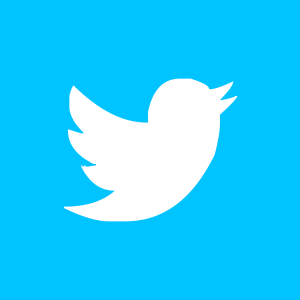 Despite its most recent financial woes you can’t deny Twitter’s hold on online engagement. Companies are finding that Twitter can increase engagement and offer an additional channel to promote their wares. For PR professionals, it offers more than just another announcement channel. In the right hands, it can be a strategic PR tool.
Despite its most recent financial woes you can’t deny Twitter’s hold on online engagement. Companies are finding that Twitter can increase engagement and offer an additional channel to promote their wares. For PR professionals, it offers more than just another announcement channel. In the right hands, it can be a strategic PR tool.
Below are 5 other ways Twitter is becoming a PR professional’s best friend:
- Find journalists: Journalists love Twitter because it is short, concise and straight to the point. It does not allow your message to be long-winded. Although it can be debated whether Twitter’s latest move to please the advertisers by allowing more letters in a single Tweet will have a positive impact in the long-term, the simple yet functional approach has already attracted hordes of journalists. Studies show that many journalists network, communicate and even search for stories using Twitter. For PR professionals, it offers an immediate Rolodex for contacting journalists.
- Find out what journalists love: Engaging with a journalist is no walk in the park. Often it requires some advice and a basic idea of what he or she is covering. One of the main functions of Twitter is in its ability to allow you to listen. [bctt tweet=”One of the main functions of Twitter is in its ability to allow you to listen.”] You can now follow journalists to find out what moves and motivates them. This can empower you to have meaningful conversations.
- Be a journalist’s friend: The way we make friends with journalists has shifted dramatically in recent years. It used to be a phone call, a friendly recommendation, a simple conversation over drinks or a strategic meeting at an event. With Twitter, you can like their posts or retweet their tweets. This will help you to create inroads with journalists. After all, what journalist does not like to see his or her posts being promoted?
- Create Twitlists: In the past, following the interests of your contacts and journalists depended on how well your brain could connect the dots and retain diverse interests. Twitlists have made this a non-issue. Essentially, these lists can help you organize groups without having to follow the members. They are especially useful in finding out what is current, relevant and buzzing in the industry you are in. You are also able to follow the lists of others, so you can tap into the “expertise” of other user groups.
- Recruit team members: Are you looking to build your PR team? Twitter offers an excellent recruitment tool. While LinkedIn is designed for recruitment agencies (although it is trying to become more), Twitter allows you attract people directly. With Twitter’s unique interface, you can be assured that you are reaching out to a social media-savvy person who has no trouble communicating in 140 letters.
Yes, Twitter can be a windfall for PR. But remember that it is also a double-edged sword. It demands constant monitoring and the ability to communicate effectively with less words. [callout style=”red” centertitle=”true” align=”center”]Twitter demands constant monitoring and the ability to communicate effectively with less words.[/callout] Once you become an ace, it can be your PR assistant that keeps you tethered to a fast evolving market.
####
[symple_social icon=”twitter” url=”twitter.com/broadpr/” title=”Follow BroadPR” target=”self” rel=””]